| Name | Polokoff Rasp |
| Lead Time | Lead time advised within 48 hours of order placement. |
| Competitor | ;772005;77-2005;842-100;842100;7720-05;772006;77-2006;7720-06;7720-05_7720-06; |
| Specialty | Neuro, Ortho & Spine-Rasps & Files |
| Material Finish | Stainless Steel |
| Grade | Premium Operating Room |
| Units of Measurement | Each |
| Manufacturer | Medicrest Surgical Industries |
| Sterility | Non-Sterile |
| Usage | Reusable |
Polokoff Rasp
Polokoff Rasp is a highly versatile instrument that is ideal for use in neurosurgical or orthopedic surgical procedures that require manipulation of bone. This rasp can be used to reshape bone slightly to prevent snagging of delicate tissue layers of vasculature. Additionally it can be used to hollow out bone to aid in insertion of implants. This rasp is double-ended and available in two sizes either 3.0 mm and 4.0 mm ends or two 6.0 mm ends making it suitable for a vast majority of patient cases.
SKU: MSI-01-1245
Category: Rasps & Files
Description
Reviews (0)
Be the first to review “Polokoff Rasp” Cancel reply
Related products
Bone File #92A
single-ended, 2.0 mm wide, file outside, backward cutting, angled w/ serrations, 6" (15.0 cm) Bone File is a highly versatile instrument that can be used in almost any neurosurgical orthopedic procedures. Ranging from craniotomies to spinal surgery this file can be used to file down any types of bone. This can be useful in smoothing down rough edges to prevent catching or tearing of delicate tissues or vasculature during surgical intervention. This instrument is single-ended with the file outside and is angled with serrations and can be used in backward cutting.
Bone File #33
double-ended, plain serrations, 6.0 mm & 5.0 mm wide ends, 7" (17.5 cm) Bone File #33 is ideally suit for use in neurosurgical and orthopedic surgeries that require manipulation of bone in and around delicate tissue structures. This type of instrument can be useful in filing down the skull in procedures like craniotomies or in reshaping the vertebral arch during laminectomies or hemi-laminectomies. This gives added protection to the brain tissue or neurovascular bundles that can pass over these cut surfaces that may be jagged and could cause additionally injury or trauma. Additionally this file is double ended with plain serrations and features a 6.0 mm and 5.0 mm wide ends.
Nail & Bone Rasp
double ended, backwards cutting, 6-3/4" (17.1 cm) Nail and Bone Rasp is ideal for a number of different neurosurgical orthopedic type surgeries. This rasp is double ended making it a two in one and can quickly switch between thw two heads. It has the ability to be backwards cutting. This instrument features serrations that allow either end to be used to whittle down or smooth roughened surfaces. In craniotomies or spinal surgeries such jagged edges can cause tearing on delicate tissue such as brain tissue or individual nerves and vasculature.
Bone File – Double-Ended
double-ended, cross-cut, 7" (18.0 cm) Bone File is a highly versatile instrument that can be used in a vast array of surgical procedures. This file is double ended and is cross cut. The small paddle style blades allow it to be used near delicate tissue areas as are common in neurosurgical procedures and not cause trauma or injury by puncture wound. Additionally use of this file on jagged bone breaks or cuts or even on rough hard surfaces aids in the protected of neurovascular bundles and other tissue layers that are mobilized during surgery that can easily be torn or injured.
Bone File #12
double-ended, plain serrations, 7.0 mm & 5.0 mm wide ends, 7" (17.5 cm) Bone File #12 can be used in a variety of surgical interventions in neurosurgery or orthopedic surgery. This instrument is double ended with each end featuring plain serrations. It is ideally suited for use in filing bones such as reducing a sharp or jagged bone edge to prevent damage to surround tissue or delicate neuro-vascular bundles. Additionally each even here is a different width: 7.0 mm and 5.0 mm making it versatile enough to be used in a number of different surgical scenarios and can satisfy any surgeon preference.
Bone File #45
double-ended, plain serrations, 6.0 mm & 5.0 mm wide ends, 7" (17.5 cm) Bone File #45 is an instrument crafted for use in neurosurgical orthopedic procedures. It features a hexagonal body that also serves as a grip that makes it easy to handle manually. This file is double ended and features plain serrations as well as two different sized ends: 6.0 mm and 5.0 mm. This instrument can be useful in surgical procedures that require filing or reshaping of bone particularly to prevent damage to surround tissue. Ideally it can be used to protect delicate brain tissue and neurovascular bundles from sharp jagged edges from breaks or from cuts made in surgery.
Putti Bone Rasp – Round Blades
round blades, double-ended, 1 10.0 mm round blade tapers to 4.0 mm & 1 15.0 mm half-round blade tapers to 5.0 mm, 12" (30.5 cm) Putti Bone Rasp is an instrument ideally suited for use in surgeries that require handling and particularly mild reshaping of bone such as in neurosurgical or orthopedic surgeries. . This instrument is double ended and features one round blade and another half round. The unique design of this rasp is in the leap shaped silhouette that tapers from 11.0 mm to 4.0 mm for the round blade and from 15.0 mm to 5.0 for the half round that allows it to be fit into slim and narrow spaces and effectively whittle down bone or hard tissue from any angle.
Bone File #12Ca
double-ended, bell pattern, cross serrations, 5.0 mm & 7.0 mm wide ends, 7" (17.5 cm) Bone File #12CA is designed for use in manipulation of bone. This particular file is designed in a bell pattern and is double-ended making it a versatile instrument that can be useful in a vast array of settings. One end is 5.0 mm while the other is 7.0 mm and both features cross serrations. This file can be useful in doing this such as filing down bone when doing grafting procedures or simply to reduce the jaggedness of bone and other hard protuberances that may cause trauma to surrounding soft tissue layers of vasculature.

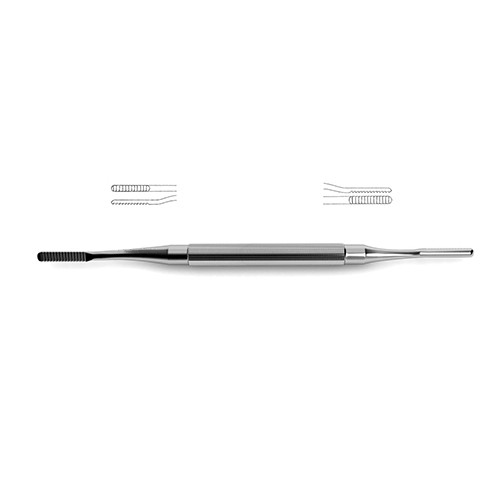
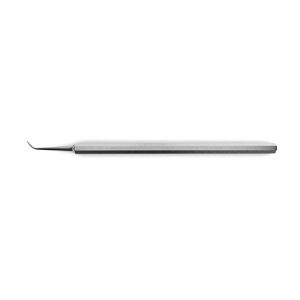
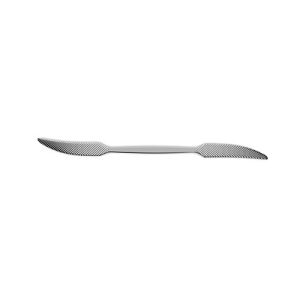
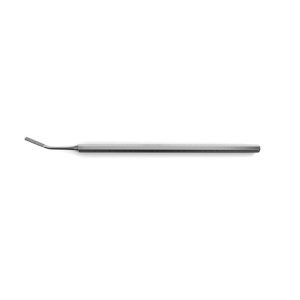

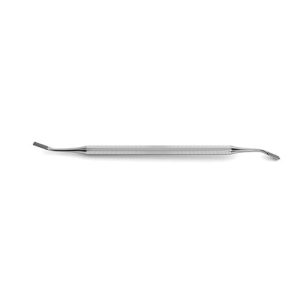
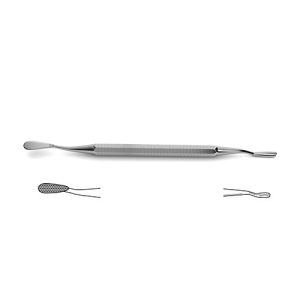

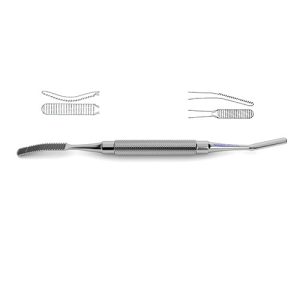
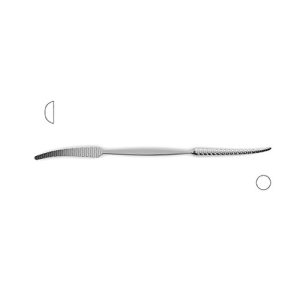
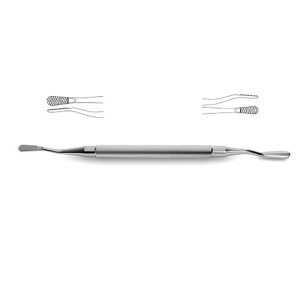

Reviews
There are no reviews yet.